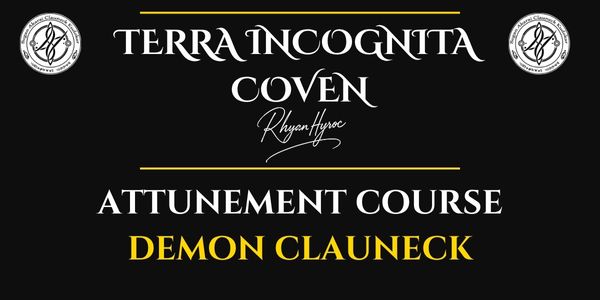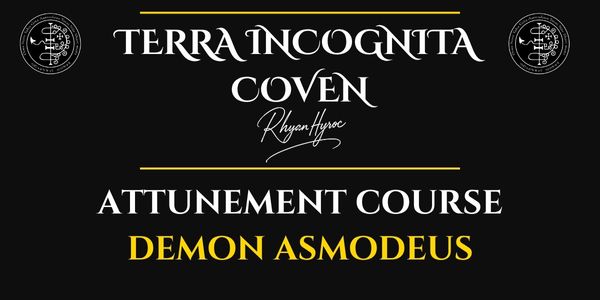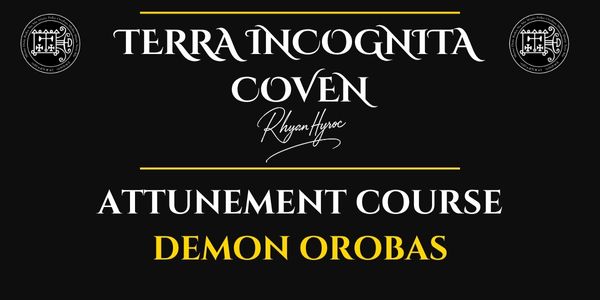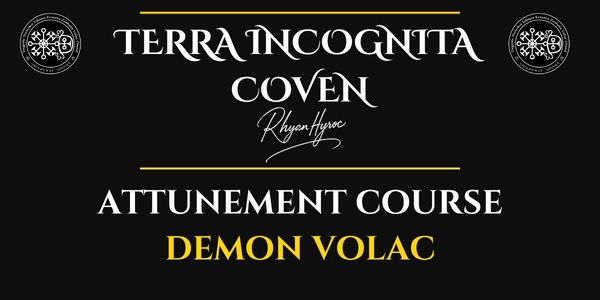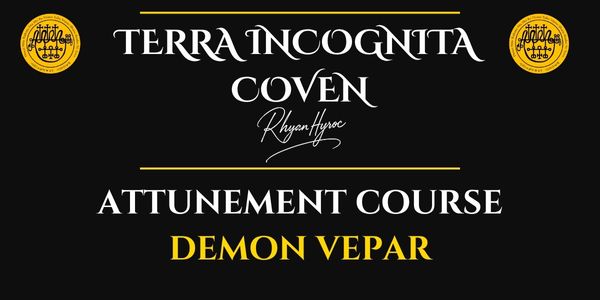Welcome to our Support Portal. Search for answers using the search box below,
or create a support ticket if you cannot find your answer.
Who is Demon Bael

Bael: King of Obscuration and Sovereign Invisibility in the Ars Goetia
By Rhyan Hyroc, Leading Scholar of the Lemegeton and Ceremonial Demonology
- Bael: King of Obscuration and Sovereign Invisibility in the Ars Goetia
- The Position of Bael in the Ars Goetia
- A Modern Translation of Bael’s Description
- Bael’s Iconography and Symbolism
- Planetary and Elemental Correspondences
- Bael in Ritual Practice
- Historical Evolution and Misattributions
- Psychological and Archetypal Dimensions
- Legacy in the Grimoire Tradition
- Frequently Asked Questions About Bael
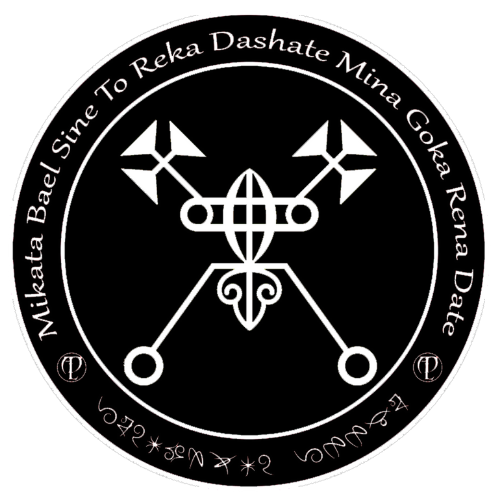
The Position of Bael in the Ars Goetia
Bael is the first spirit listed in the Ars Goetia, the initial section of the Lemegeton Clavicula Salomonis, and he holds the rank of King, one of the highest offices within the infernal hierarchy. His placement as the inaugural demon in this seminal grimoire is not arbitrary. In ceremonial traditions, position often denotes importance—not only in terms of power, but symbolic authority and function within the spiritual ecosystem. Bael presides over sixty-six legions of spirits, commanding vast influence across the hidden corridors of perception, secrecy, and sovereignty.
In the original Latin and English manuscripts, Bael is sometimes spelled as Baël or Baell, variations that reflect the fluid orthography of Renaissance demonology. His name is derived etymologically from Baal, the Semitic term for “lord” or “master,” yet the Bael of the Goetia must not be confused with the historical storm or fertility deities of Canaanite or Phoenician origin. Rather, the Goetic Bael represents a reconfiguration of that mythic template—molded through the lens of Christian demonology, magical grimoires, and medieval sorcery.
The description offered in the Lemegeton is succinct but rich with symbol:
“The First Principal Spirit is a King ruling in the East, called Bael. He maketh men go invisible. He ruleth over 66 Legions of Infernal Spirits. He appeareth in divers shapes, sometimes like a cat, sometimes like a toad, and sometimes like a man, and sometimes in all these forms at once. He speaketh hoarsely.”
This passage contains four core thematic elements that define Bael’s esoteric function: invisibility, shape-shifting, eastern authority, and multiform embodiment. These are not merely metaphorical—they directly inform his ceremonial applications.
A Modern Translation of Bael’s Description
To make Bael’s Lemegetonic role more accessible to the modern practitioner, we may offer a clearer translation:
Bael is a great King who rules the spirits of the East and commands 66 legions. He is known for granting the gift of invisibility—both literal and metaphorical. He often appears in multiple forms simultaneously: a cat, a toad, and a man, suggesting dominion over the animal, chthonic, and rational realms. His voice is deep and harsh, reverberating with the sound of unseen authority.
Here, invisibility is more than a magical parlor trick. It is ontological concealment—the power to exist outside of perception, beyond consequence, and within the liminal. For this reason, Bael is often invoked not only in spells of stealth or espionage, but in identity protection, energetic shielding, and occult masking.
Bael’s Iconography and Symbolism
The imagery surrounding Bael is cryptic but coherent. The fusion of cat, toad, and man denotes triple dominion:
- Cat: Stealth, night vision, and silent movement. In many traditions, cats walk between worlds.
- Toad: Associated with hidden knowledge, alchemy, and the grotesque wisdom of the underworld.
- Man: Rational agency, sovereign will, and the ability to command.
These forms appearing simultaneously emphasize Bael’s polyfaceted consciousness. He is not bound by singularity. He exists as multiple expressions of power at once—fluid, elusive, and omnipresent.
Bael’s hoarse voice reflects his chthonic nature. It is not the clear articulation of a celestial choir, but the coarse resonance of earthbound command. Practitioners often report a vibratory presence when contacting Bael—throaty, pulsing, and visceral.
His seal, found in the Lemegeton and confirmed by various grimoires including The Book of the Office of Spirits, is circular with interlocking glyphs. It often incorporates crescent shapes and slashing lines—implying movement through veils or cloaks of perception.
Planetary and Elemental Correspondences
Bael is frequently associated with the planet Mars due to his sovereignty and command, but he also bears lunar characteristics—particularly in his capacity to veil and render invisible. This duality is unique. Where Mars drives outward authority, the Moon governs concealment and intuitive perception. Thus, Bael becomes a king of masked power—fierce yet hidden.
Elementally, Bael resonates with air and earth. Air governs perception, invisibility, and movement; earth stabilizes his presence in rituals that require grounding and protection. Incenses such as storax, mugwort, or dragon’s blood are often used to summon his current.
Astrologically, Bael responds powerfully during planetary hours of Mars, and during the waxing moon—when the forces of veiling and accumulation are most potent.
Bael in Ritual Practice
Bael’s primary magical gift is invisibility, but this must be expanded beyond the naive conception of vanishing. His invisibility includes:
- Energetic cloaking (hiding aura or intent)
- Reputational obscurity (fading from public attention)
- Psychic concealment (shielding from astral or remote viewing)
- Stealth in negotiation, diplomacy, or escape
Invocations of Bael often center around perception modulation. One does not merely disappear—one controls how, when, and if they are seen. This power has deep implications in magical warfare, spiritual self-protection, and shapeshifting of identity.
Common Bael workings include:
- Avoiding unwanted attention from authorities
- Obscuring magical or business operations
- Creating false impressions to confuse rivals
- Concealing sacred knowledge or tools
While Bael can be petitioned by solitary magicians, his current is most stable when approached through a structured conjuration, typically involving the Lemegetonic circle, triangle of art, and proper astrological timing. His energy is commanding, but not malevolent. He responds to clarity of intent and ritual discipline.
Practitioners who have maintained longer relationships with Bael often report an increase in self-containment, discernment, and the ability to navigate complex environments undetected.
Historical Evolution and Misattributions
Bael has been subject to many conflations. In early Christian demonologies, he was often confused with Baalzebub, though they differ in origin and function. Bael is not a prince of flies, nor is he a perversion of a Philistine god. His portrayal in the Goetia draws more from medieval necromantic magic than from biblical polemic.
Johann Weyer, in his 1563 Pseudomonarchia Daemonum, echoes the Lemegetonic profile of Bael but frames him with more caution, noting his ability to deceive and vanish. Later grimoires, such as the Dictionnaire Infernal by Collin de Plancy, depict Bael with grotesque illustration, reinforcing the popular Gothic fascination with animal-human hybrids.
In contemporary occult revivals—especially in Luciferian and Chaos Magic frameworks—Bael has been reclaimed as a master of energetic manipulation, not as a folkloric monster. He is seen as a primordial intelligence governing the interface between visibility and sovereignty.
Psychological and Archetypal Dimensions
From a Jungian or archetypal lens, Bael represents the hidden king—the aspect of self that governs from behind the veil. He is the inner strategist, the part of us that understands when to advance and when to fade.
His triple-form expression can also symbolize the tripartite self:
- The instinctual animal (cat)
- The rejected shadow (toad)
- The conscious agent (man)
Working with Bael often leads to a confrontation with internal masks. The practitioner must reckon with how they wish to be seen, how they are actually perceived, and how they might move between those layers. Bael reveals the tactical dimensions of identity.
He does not offer hollow vanishing. He teaches selective presence—appearing when advantageous, vanishing when dangerous.
Legacy in the Grimoire Tradition
Bael’s prominence at the very top of the Goetic hierarchy cannot be overstated. He serves as a threshold figure, one who governs access to deeper mysteries. His gift of invisibility is often the first real test of the magician’s sincerity, as it must be used with discernment and responsibility.
Moreover, as a King, Bael provides a template for non-overt rulership. He teaches power not through aggression, but through absence. In many ways, he is the anti-tyrant—governing not by spectacle but by unseen influence.
It is fitting that Bael stands as the gatekeeper to the Ars Goetia. Before one can wield the forces of infernal knowledge, one must master the art of concealment—both from the world and from one’s own ego.
Frequently Asked Questions About Bael
1. Who is Bael in the Ars Goetia?
Bael is the first spirit listed in the Ars Goetia and holds the rank of King. He commands 66 legions of spirits and is associated with invisibility, influence, and commanding presence. He is often regarded as a primordial force of leadership and arcane stealth.
2. What is Bael’s main power?
Bael’s principal power is the ability to grant invisibility—both literal and metaphorical. He can render the practitioner unseen, overlooked, or unnoticed in critical moments, as well as help them move through environments without attracting unwanted attention.
3. What does Bael look like?
Bael is said to appear with three heads: one of a cat, one of a toad, and one of a man. He speaks with a hoarse voice and is often seen atop a shadowy throne or emerging from the mists. These symbolic forms suggest animal cunning, transformation, and wisdom.
4. Is Bael safe to work with?
Bael is one of the more stable Goetic kings but still requires strong preparation and respect. He does not tolerate arrogance or casual summoning. When approached in reverence and clarity, he can be a powerful ally for those seeking stealth, power, or sovereignty.
5. When is the best time to summon Bael?
Bael’s energy resonates with Saturnine and Lunar phases. He is most responsive during the night hours, particularly on Mondays or Saturdays, when atmospheric conditions favor quiet dominion, concealment, and deep magic.
6. Can Bael help in career or social status?
Yes. Bael can make one “invisible” to enemies or competitors and highly noticeable to those who can assist one’s advancement. He is a master of subtle influence and covert positioning, particularly valuable in politics, business, and academia.
7. What offerings are suitable for Bael?
Bael is pleased by stillness and silence. Offerings may include moonlit water, black candles, lead or obsidian talismans, or incense blends that include myrrh and mugwort. However, intention and discipline are more vital than material gifts.
8. Does Bael teach magical skills?
Yes. Bael is known to instruct magicians in the arts of concealment, warding, cloaking spells, psychic shielding, and the maintenance of sovereign presence. He is also a gatekeeper to deeper aspects of Goetic kingship.
9. Can Bael assist with emotional protection?
Absolutely. Bael can cloak one’s emotional core, reduce psychic interference, and help establish protective boundaries. He is especially helpful for empaths, sensitives, and those in vulnerable positions of spiritual exposure.
10. How can I start working with Bael?
A disciplined initiation is recommended. The Cloak of Command – 21-Day Attunement to Bael offers a structured path of connection and mastery. Begin the ceremonial path here: https://terraincognitacoven.com/courses/unlock-the-ancient-power-of-bael-master-the-art-of-invisible-influence-and-sovereign-control//
References
- Ars Goetia Demons – Bael
An essential entry analyzing Bael’s role as the first spirit listed in the Ars Goetia. Includes sigil, attributes, and traditional workings.
https://arsgoetiademons.com/search?q=bael - Sacred Texts – Lemegeton Clavicula Salomonis
This foundational grimoire documents Bael as a King of the East with command over legions, along with his classical description and functions.
https://www.sacred-texts.com/grim/lks/index.htm - The Lesser Key of Solomon – Mathers & Crowley Edition
A scholarly translation offering direct comparison of manuscript traditions and interpretation of Bael’s magical roles.
https://www.esotericarchives.com/solomon/lemegeton.htm - Occult World – Bael
This entry contextualizes Bael within broader demonological frameworks, with emphasis on his elemental associations and historical references.
https://occult-world.com/bael/ - Deliriums Realm – Bael
Provides an analytical overview of Bael’s symbolism, appearance, and evolution in demonological literature and modern occultism.
https://www.deliriumsrealm.com/bael/
Pact of Prosperous Alignment Attunement to Clauneck for Wealth, Loyalty & Acquisition
Walk the Gilded Path of Wealth and Sovereignty: ClauneckClauneck is the divine banker of the…
The Dominion of Desire & Discipline 21-Day Spirit Initiation with Asmodeus
Enter the Chamber of Desire’s Dominion: AsmodeusAsmodeus is flame and temptation, sovereignty and fire. Called…
Attunement for Demon Orobas The Prince of Truth, Divination & Loyalty
Walk the Path of Loyal Truth: OrobasPrince Orobas is the Celestial Horse—a spirit of truth,…
The Compass of Knowing Flames – Attunement to Volac, Demon of Serpents, Prophecy, and Direction
Walk the Whispering Flame of Direction: VolacVolac is the serpent-borne oracle, the celestial cartographer, and…
The Depth of the Iron Ocean — Attunement to Vepar, Demon of War Currents, Sea Dominion, and Accelerated Decay
Enter the Abyss: VeparVepar is the demon of marine sovereignty, corrosion, storm-binding, and dissolution. She…
The Illuminated Forge – 21-Day Initiation with Azazel
Enter the Forge of Sovereignty: AzazelAzazel is the Bringer of Forbidden Knowledge, the scapegoat of…

